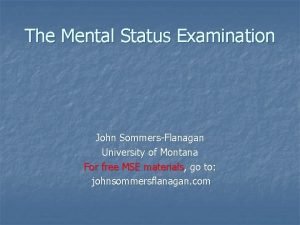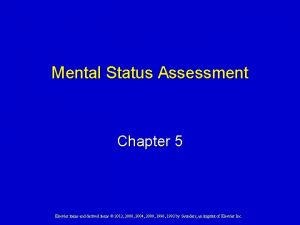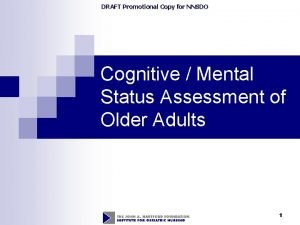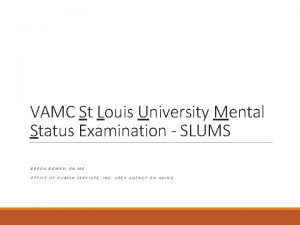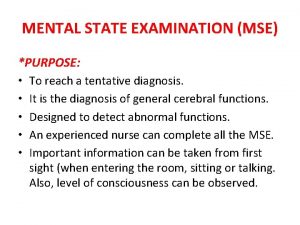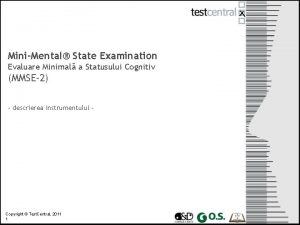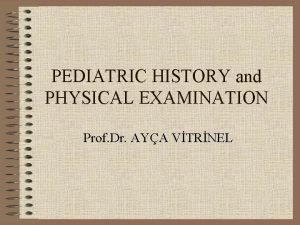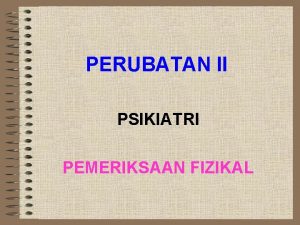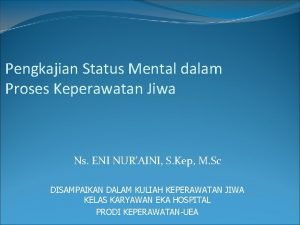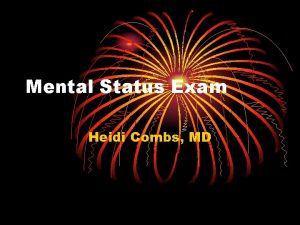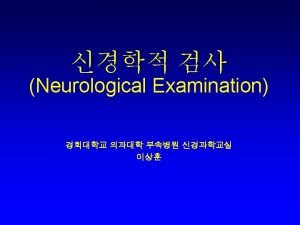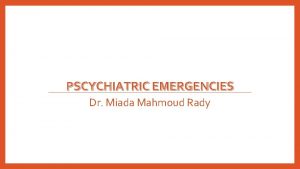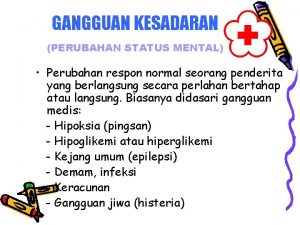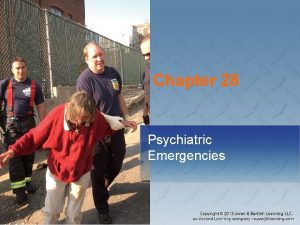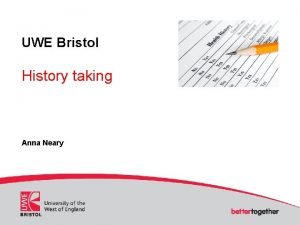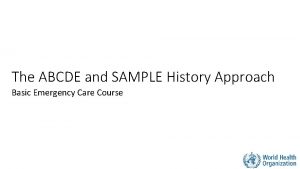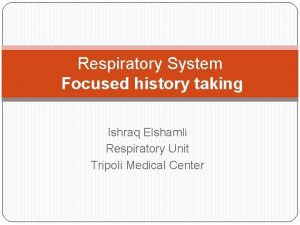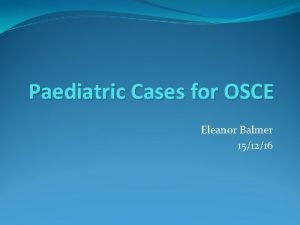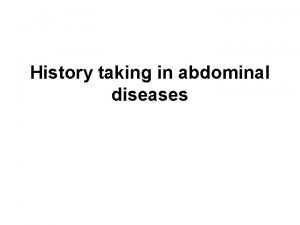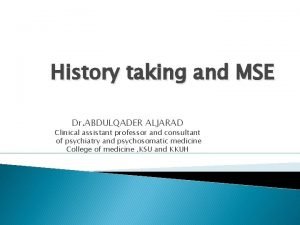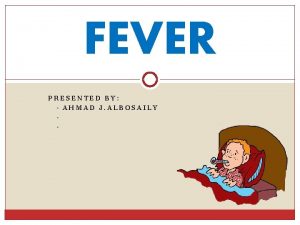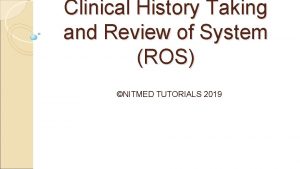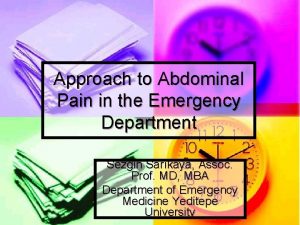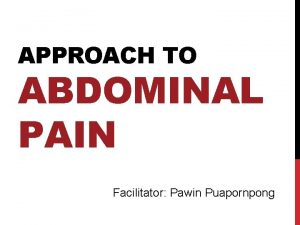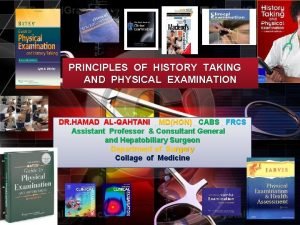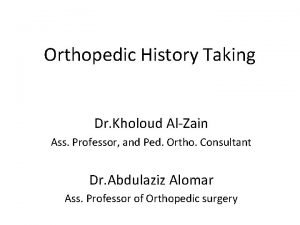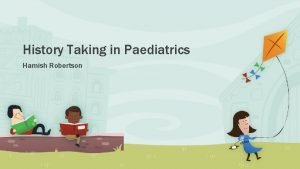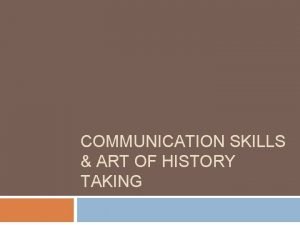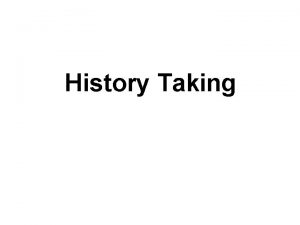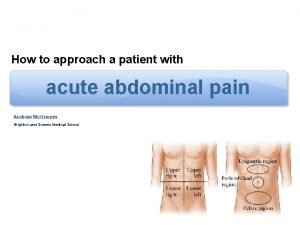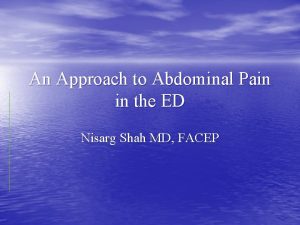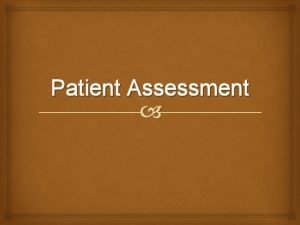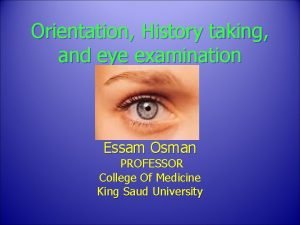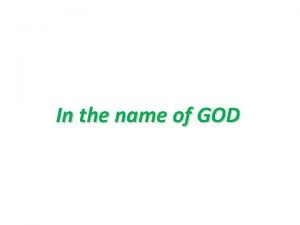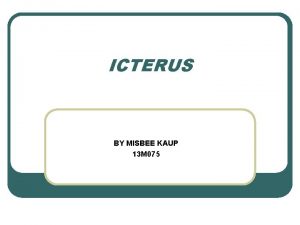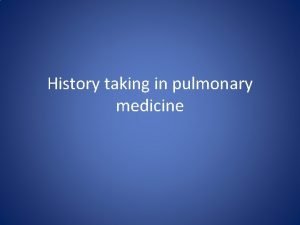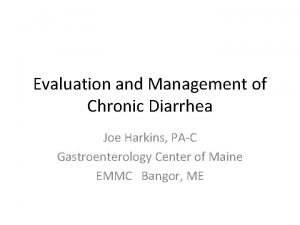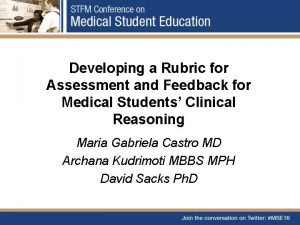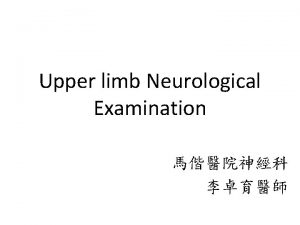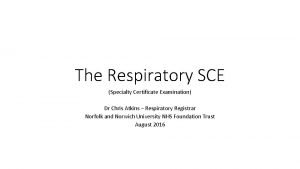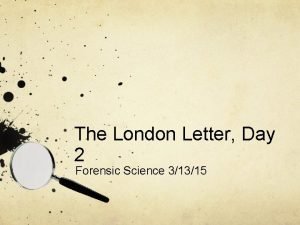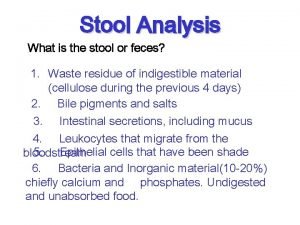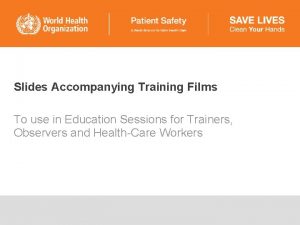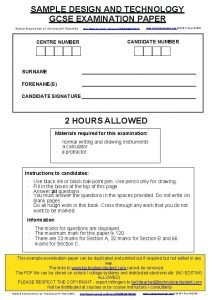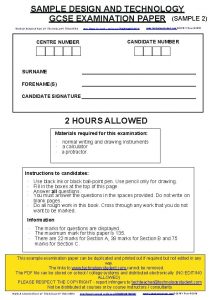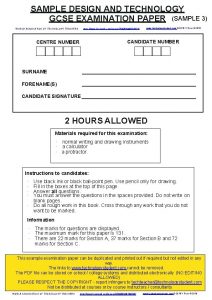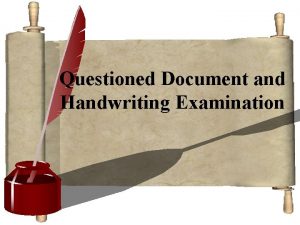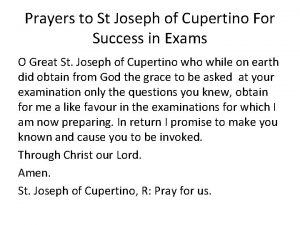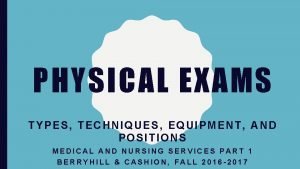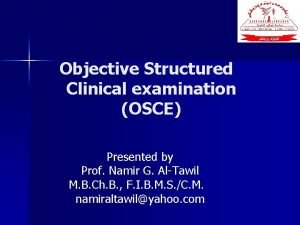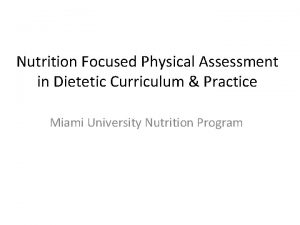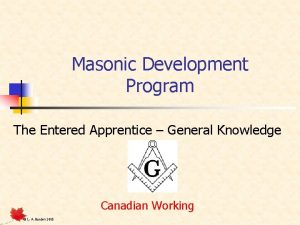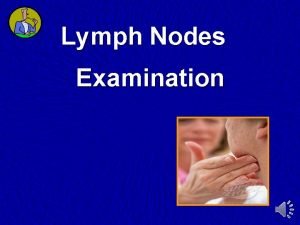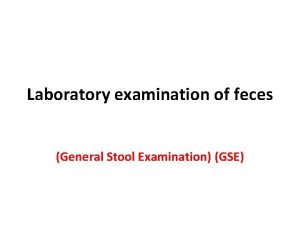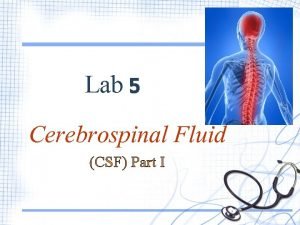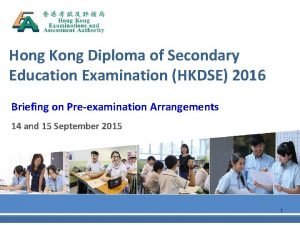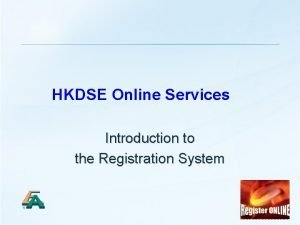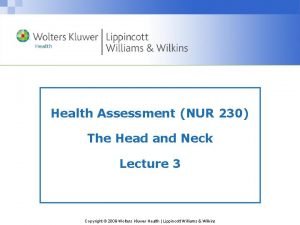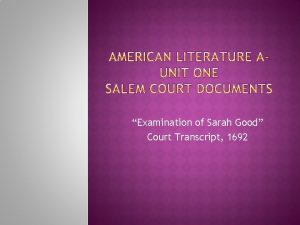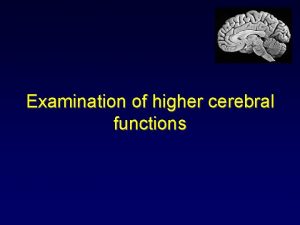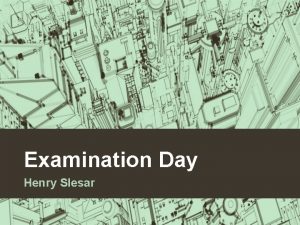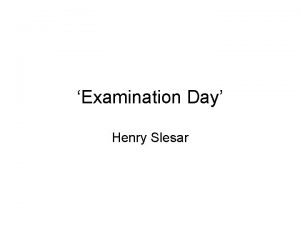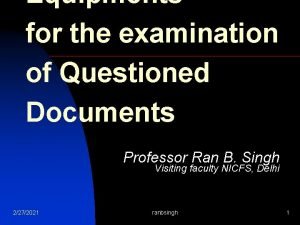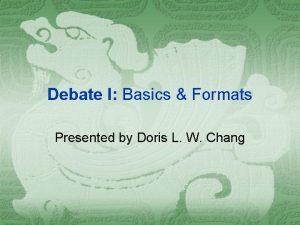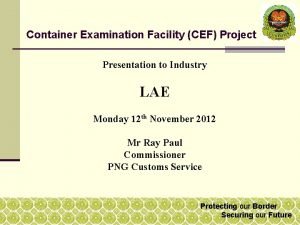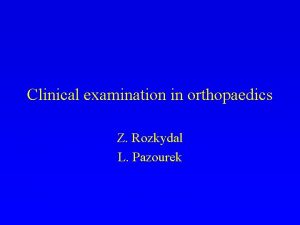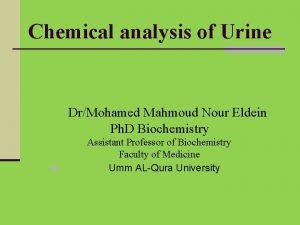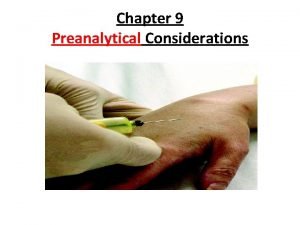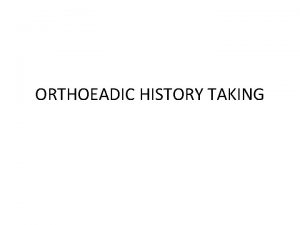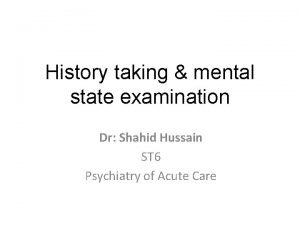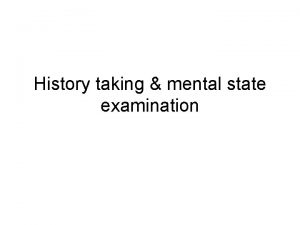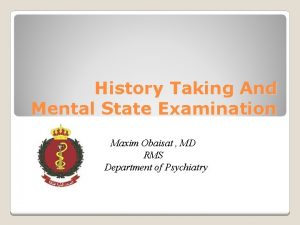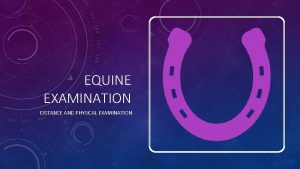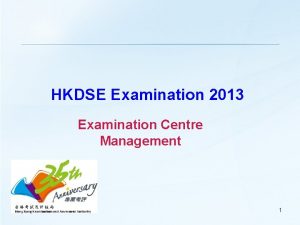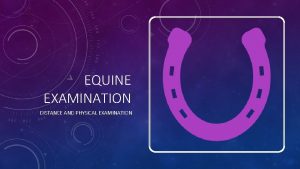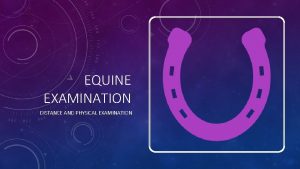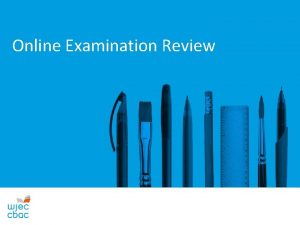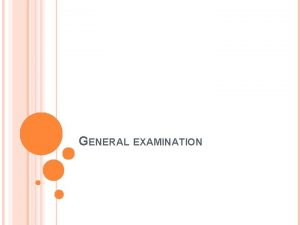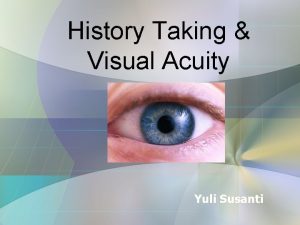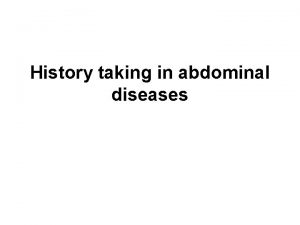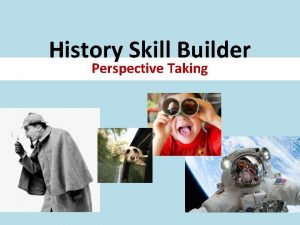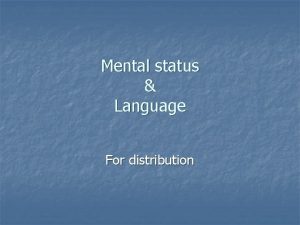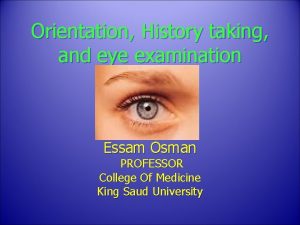1 History Taking 2 Mental Status Examination 3













































































- Slides: 77


1. 병력청취(History Taking) 2. 정신기능검사(Mental Status Examination) 3. 뇌신경검사(Cranial Nerve Examination) 4. 운동계검사(Motor System Examination) 5. 감각계검사(Sensory System Examination) 6. 반사(Reflexes)


Mental Status & Behavior n General appearance and behavior (including level of consciousness & affection) n Attention and concentration n Memory n Orientation n Thought process (abstract thought, judgement, insight) n Thought content n Calculations n Language and speech

Functional Anatomy of Brain Cortex n Frontal lobe Dominant, Nondominant, Bilateral n Parietal lobe Dominant, Nondominant, Bilateral n Temporal lobe Dominant, Nondominant, Bilateral n Occipital lobe Dominant, Nondominant, Bilateral



Speech Examination n Fluency of speech n Comprehension n Naming letters, numbers, and objects n Repetition n Reading n Writing n Graphic

Classification of Aphasia n Global aphasia n Motor aphasia (Broca) n Sensory aphasia (Wernicke) n Conduction aphasia n Transcortical motor aphasia n Transcortical sensory aphasia

뇌신경검사(Cranial Nerve Examination) n n Olfactory nerve Optic nerve n n Oculomotor, Trochlear, and Abducens nerve n n n Eye lids, pupils, extraocular movement Trigeminal nerve : Facial sensory, corneal reflex Facial nerve : Movement of forehead and cheek, taste Vestibulocochlear nerve : Weber, Rinne test Glossopharyngeal, Vagus nerve n n Fundus, visual field, visual acuity, color vision Soft palate elevation, gag reflex(CN 9 CN 10) Spinal Accessory nerve : SCM, Trapezius muscle Hypoglossal nerve : Tongue movement

n Olfactory Nerve n Aromatic, nonirritative substance n Test when 1. The patient complains of loss of smell or taste 2. Suspect frontal pathology n Trauma n Headache n Personality change n Dementia

n Optic nerve n Fundus, visual field, visual acuity, color vision Confrontation Test

n Not Cooperated or Stuporous Patient 1. Watch the patient’s eyes to see 2. Starting from behind the patient Your face or money, no sounds ! 3. Visual Threat (threatening test)

n Oculomotor, Trochlear, and Abducens nerve n Eye lids, pupils, extraocular movement Primary Gaze Red-Glass Test

Pupillary Reflex Arc Afferent Pupillary Pathway Light Optic nerve Optic chiasm Optic tract Lateral geniculate body Pretectal nucleus Bilateral Edinger-Westphal nucleus Efferent Pupillary Pathway Edinger-Westphal nucleus Oculomotor nerve Ciliary ganglion Direct or Indirect Light Reflex

Direct reflex Indirect reflex Optic nerve Optic tract Lateral geniculate Optic radiation Visual cortex + or + + + Oculomotor nerve - +

Pupil Examination “PERRL & A” n P : Pupil n E : Equal (Symmetricity) n R : Round (Shape) R : Reflex to L : Light A : Acommodation n

Eye Movement Examination 1. Observe the eyes for their position at rest. 2. Observe the spontaneous movement of the eye. 3. Ask the patient to follow a stimulus, such as penlight. 4. The test for convergence of the eyes. 5. Look for any adventitious (extraneous) movement, such as nystagmus

탐구사항 1. The pathway of eye movement n Frontal eye field n PPRF(paramedian pontine reticular formation) n MLF(medial longitudinal fasciculus) 2. Internuclear ophthalmoplegia 3. One-and-a-half syndrome

뇌신경검사(Cranial Nerve Examination) n Trigeminal nerve : Facial sensory, corneal reflex V 1, V 2, V 3 division of trigeminal nerve

Corneal Reflex Arc Afferent Pupillary Pathway Trigeminal nerve Efferent Pupillary Pathway Facial nerve

Corneal stimulus 1. 2. 3. 4. Rt. stimulus Lt. stimulus 1. 2. 3. 4. Right blink Left blink + - Right Afferent lesion Normal of Left Afferent and Both efferent Right efferent lesion + + +

뇌신경검사(Cranial Nerve Examination) n Facial nerve : Movement of forehead and cheek, taste

탐구사항 1. Peripheral Facial Palsy 2. Central Facial Paralysis 3. Facial nerve function n Nerve to stapedius n Chorda tympani n Etc…

뇌신경검사(Cranial Nerve Examination) n Vestibulocochlear nerve : Weber, Rinne test Weber test Rinne test

탐구사항 1. Nylen-Balani Test 2. Caloric test

뇌신경검사(Cranial Nerve Examination) n Glossopharyngeal, Vagus nerve n Soft palate elevation, gag reflex(CN 9 CN 10)

뇌신경검사(Cranial Nerve Examination) n Spinal Accessory nerve : SCM, Trapezius muscle Shoulder Elevation Power Check

뇌신경검사(Cranial Nerve Examination) n Hypoglossal nerve : Tongue movement Tongue Deviate or Not

운동계검사(Motor System Examination) n n 시진(Inspection) n Muscle bulk n Abnormal movement 근긴장도(Muscle tone) : spasticity, rigidity, hypotonia n 근력(Muscle power) n Screening tests for hemiparesis n Pronator drift n Rapid finger taps n Arm-rolling test

Functional Anatomy of Motor System

Abnormal Movements n Fasciculation n Tremor n Myoclonus n Asterixis(Negative myoclonus) n Chorea n Athetosis n Ballism

Abnormal Movements n Fasciculation

Abnormal Movements n Tremor

Abnormal Movements n Myoclonus

Abnormal Movements n Asterixis(Negative myoclonus)

Abnormal Movements n Choreoathetosis

Abnormal Movements n Ballism

근긴장도(Muscle Tone) n Spasticity

근긴장도(Muscle Tone) n Rigidity

근긴장도(Muscle Tone) n Hypotonia

근력(Muscle Power) 0 No muscle contraction detected 1 A barely detectable flicker or trace of contraction 2 Movement occurs only in the plane of gravity 3 Active movement against gravity but not against resistance 4 Active movement against resistancebut less than normal strength (may be graded as 4+, 4, or 4 -) 5 Normal strength

Screening Tests for Hemiparesis n Pronator drift

Screening Tests for Hemiparesis n Rapid finger taps

Screening Tests for Hemiparesis n Arm-rolling test

감각계검사(Sensory System Examination) n Primary sensory modalities n n n Light touch Pinprick, Temperature Vibration Joint position(proprioception) Cortical sensory modalities n n n Simultanagnosia Graphesthesia Stereognosis Two-point discrimination Baresthesia

Functional Anatomy of Sensory System

Cortical Sensory Modalities n Graphesthesia

Cortical Sensory Modalities n Stereognosis

Cortical Sensory Modalities n Two-point discrimination

Cortical Sensory Modalities n Baresthesia

반사(Reflexes) n 심부건반사(Deep tendon reflexes) n 족부반사(Plantar reflexes) n 피부반사(Cutaneous reflexes) n 전두엽 해체징후(Frontal releasing signs)

심부건반사(Deep tendon reflexes) n Jaw jerk

심부건반사(Deep tendon reflexes) n Biceps

심부건반사(Deep tendon reflexes) n Triceps

심부건반사(Deep tendon reflexes) n Finger flexion (Hoffman’s) reflex

심부건반사(Deep tendon reflexes) n Knee jerk

심부건반사(Deep tendon reflexes) n Ankle jerk

족부반사(Plantar reflexes) n Babinski’s sign n Chaddock’s sign n Oppenheim’s sign n Gordon’s sign

족부반사(Plantar reflexes) n Babinski’s sign

족부반사(Plantar reflexes) n Chaddock’s sign

족부반사(Plantar reflexes) n Oppenheim’s sign

족부반사(Plantar reflexes) n Gordon’s sign

피부반사(Cutaneous reflexes) n n 복부반사(Abdominal reflexes) n T 8 -9 n T 11 -12 고환올림근반사(Cremasteric reflex) n n L 1 -2 S 1 구해면체근반사(Bulbocavenous reflex and anal wink) n S 2 -4 S 3 -4

전두엽 해체징후(Frontal releasing signs) n Snout, suck, and root reflexes n Palmomental reflex n Grasp reflex n Glabellar reflex

전두엽 해체징후(Frontal releasing signs) n Snout reflex

전두엽 해체징후(Frontal releasing signs) n Palmomental reflex

전두엽 해체징후(Frontal releasing signs) n Grasp reflex

전두엽 해체징후(Frontal releasing signs) n Glabellar reflex

운동조화(Coordination) n n Coordination of movement n Dysmetria : finger-to-nose test, heel-to-shin test n Dysdiadochokinesia : rapid alternating movement Maintenance of muscle tone n n Hypotonia : pendular knee jerk Equilibrium n Gait and Stance ataxia : tandem gait

Functional Anatomy of Cerebellum n Embryologic classification of cerebellum n n Functional classification of cerebellum n n Archcerebellum, Paleocerebellum, Neocerebellum Vestibulocerebellum, spinocerebellum, cerebrocerebellum Deep nuclei of cerebellum n Dentate, Interposed(emboliform, globose), fastigial

Coordination of Movement n Dysmetria finger-to-nose test heel-to-shin test

Coordination of Movement n Dysdiadochokinesia Rapid alternating movement

Maintenance of Muscle Tone n Hypotonia Pendular knee jerk

Equilibrium n Gait and Stance ataxia Tandem gait

Abnormal Gait n Cerebellar gait n Gait of sensory ataxia n Hemiplegic gait n Festinating gait n Steppage gait n Waddling gait n Staggering or Drunken gait n Hysteric gait (Astasia-abasia) n Gait in Normal Pressure Hydrocephalus

Meningeal Irritation Signs n Neck stiffness n Kernig sign n Brudzinski sign
 Mse report sample
Mse report sample Mental.status exam
Mental.status exam Jarvis chapter 5 mental status assessment
Jarvis chapter 5 mental status assessment Nnsdo
Nnsdo Vamc slums
Vamc slums Overvalued ideas
Overvalued ideas Mmse test romana
Mmse test romana Sneezing
Sneezing Contoh pemeriksaan status mental
Contoh pemeriksaan status mental Aktivitas motorik grimasen adalah
Aktivitas motorik grimasen adalah Linear thought process mental status
Linear thought process mental status Heidi combs
Heidi combs Dismetria
Dismetria Coastmap ems
Coastmap ems Perubahan status mental
Perubahan status mental Mental status coastmap
Mental status coastmap Chapter 20 mental health and mental illness
Chapter 20 mental health and mental illness Jeopardy mental health
Jeopardy mental health Pain history taking
Pain history taking Abcde approach
Abcde approach History taking respiratory system
History taking respiratory system Paediatric history osce scenarios
Paediatric history osce scenarios Abdominal pain socrates
Abdominal pain socrates Thought content examples
Thought content examples Fever history taking
Fever history taking Fatulance
Fatulance Hypogastric pain causes
Hypogastric pain causes Lordcraft pain
Lordcraft pain Principles of physical examination
Principles of physical examination Orthopedic history taking
Orthopedic history taking History taking paediatrics
History taking paediatrics The art of history taking
The art of history taking Components of history taking
Components of history taking Principles of history taking
Principles of history taking Lodcraft pain
Lodcraft pain Lodcraft history taking
Lodcraft history taking General history taking of patient
General history taking of patient Marcus gunn pupil
Marcus gunn pupil Dysphagia vs odynophagia
Dysphagia vs odynophagia Cern icterus
Cern icterus Smoking history taking
Smoking history taking Eluxodoline
Eluxodoline Systematic review in history taking
Systematic review in history taking Lodcraft history taking
Lodcraft history taking Also history physical
Also history physical What is gdl
What is gdl Grading of reflexes
Grading of reflexes Respiratory sce
Respiratory sce London letters for handwriting examination
London letters for handwriting examination Stool exam normal values
Stool exam normal values Physical examination tray
Physical examination tray Sample design and technology gcse examination paper answers
Sample design and technology gcse examination paper answers Sample design and technology gcse examination paper answers
Sample design and technology gcse examination paper answers Www.technologystudent.com
Www.technologystudent.com Questioned documents include
Questioned documents include Saint joseph cupertino prayer for exam
Saint joseph cupertino prayer for exam Prayer before a test or exam
Prayer before a test or exam Low fowler's position
Low fowler's position Objective examination of patient
Objective examination of patient Nutrition assessment
Nutrition assessment Nutrition focused physical findings
Nutrition focused physical findings Entered apprentice obligation
Entered apprentice obligation Epitrochlear
Epitrochlear Stool microscopic examination
Stool microscopic examination Csf appearance
Csf appearance Diploma of secondary education
Diploma of secondary education Hkdse examination online services
Hkdse examination online services Bates guide to physical examination
Bates guide to physical examination The examination of sarah good
The examination of sarah good Higher function examination
Higher function examination Examination day by henry slesar
Examination day by henry slesar Examination day henry slesar
Examination day henry slesar Transmitted light examination in questioned document
Transmitted light examination in questioned document Cross examination in a debate
Cross examination in a debate Container examination facility
Container examination facility L
L Leukocytes in urine
Leukocytes in urine Pre analytical considerations in phlebotomy
Pre analytical considerations in phlebotomy
